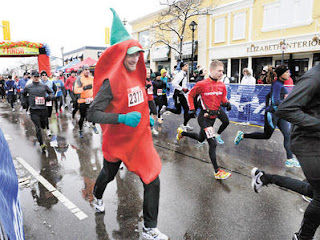My focus over the winter was to improve on my running and swimming. Many athletes will go on and on about the "best" way to get faster, and 10 simple steps to a best 10K or whatever. The first step is to just do it. Make a schedule of when you are going to train, and follow it. It's very easy in the winter to let cold weather or other distractions keep you from training, but in my opinion 50% of training is just showing up.
The the varsity swim program at UW took care of my swimming for the winter. Running was a little more difficult as I didn't have a coach to give me daily workouts. I started where anyone would start, by just doing what I know has worked in the past and repeating old workouts. From September to January, I ran 4-5 times per week which included 2 quality speed runs, one or two easy long runs, and one longer tempo run. The length of each session was usually dictated by how I felt and how cold it was. Luckily I was able to run my quality sessions at an indoor track.
In January I was introduced to Sean Delanghe's Health & Performance running group. Running alone for the last few months made me forget how beneficial it is having someone to run with. My fall training had been a great start, but it wasn't until I joined H&P that I started to really see measurable improvements. I still wasn't getting in the long 1-2 hour runs, but my short distance speed got faster and faster.
March is always a good time to measure your winter training improvements. I've raced the Chilli Half Marathon in Burlington 3 years in a row now and I find it a perfect venue for an early spring fitness test. I knew I had a lot of speed in my legs, but the distance was something that I hadn't been putting in. My longest run at this point had been 12K. I opened with a 38:50 10K (second best time ever) and felt really good for the first hour. By 16K I really felt myself tiring and by 20K it was all I had left in me to keep running. I improved on my 1/2 marathon best by 6 minutes posting a 1:21 and finishing 3rd in my age group.
I knew my training was working, and I knew I could go faster, but I hadn't yet completed what I believe to be the most beneficial training I have ever done.



